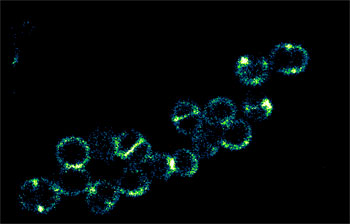But it won't be wealthy progressive elites who send us back to a "Dark Ages of medicine" with their anti-vaccine fad, warned UK Prime Minister David Cameron last week, it is more likely be the growing threat of resistance to antibiotics.
Since 1945, when penicillin became a widespread treatment, humanity has had a relatively easy time of things. But in the modern biological arms race, microbes are developing resistance to existing antibiotics faster than our regulatory system can approve new ones.

Credit: University of Sheffield
“One of our failings is that we see the world from the perspective of a human timeframe. Disease causing microbes, of course, can adapt at dizzying speed, and our challenge is to wrong-foot them with innovative new treatments," said Simon Foster, Professor of Molecular Microbiology at the University of Sheffield, co-founder of the Florey Institute and Imagine Project Director,"The University of Sheffield has recognized the potentially dire situation in which we find ourselves and has launched our flagship Florey Institute specifically to tackle important antibiotic resistant organisms. The Florey Institute will take an approach that spans the fundamental life of pathogens, how they interact with us and how we can develop new treatment and prophylactic regimes. Over the coming years this learning could help save countless lives across the world."
The Florey Institute is named after Sir Howard Florey, former Chair of Pathology at the University of Sheffield, who in 1941 conducted the first ever clinical trials of penicillin – a drug which would go on to save more than 82 million lives worldwide. Now the Florey Institute is tackling how infectious agents interact with their hosts to cause disease and to translate these discoveries into new treatments and prophylaxis.
Source: University of Sheffield






Comments